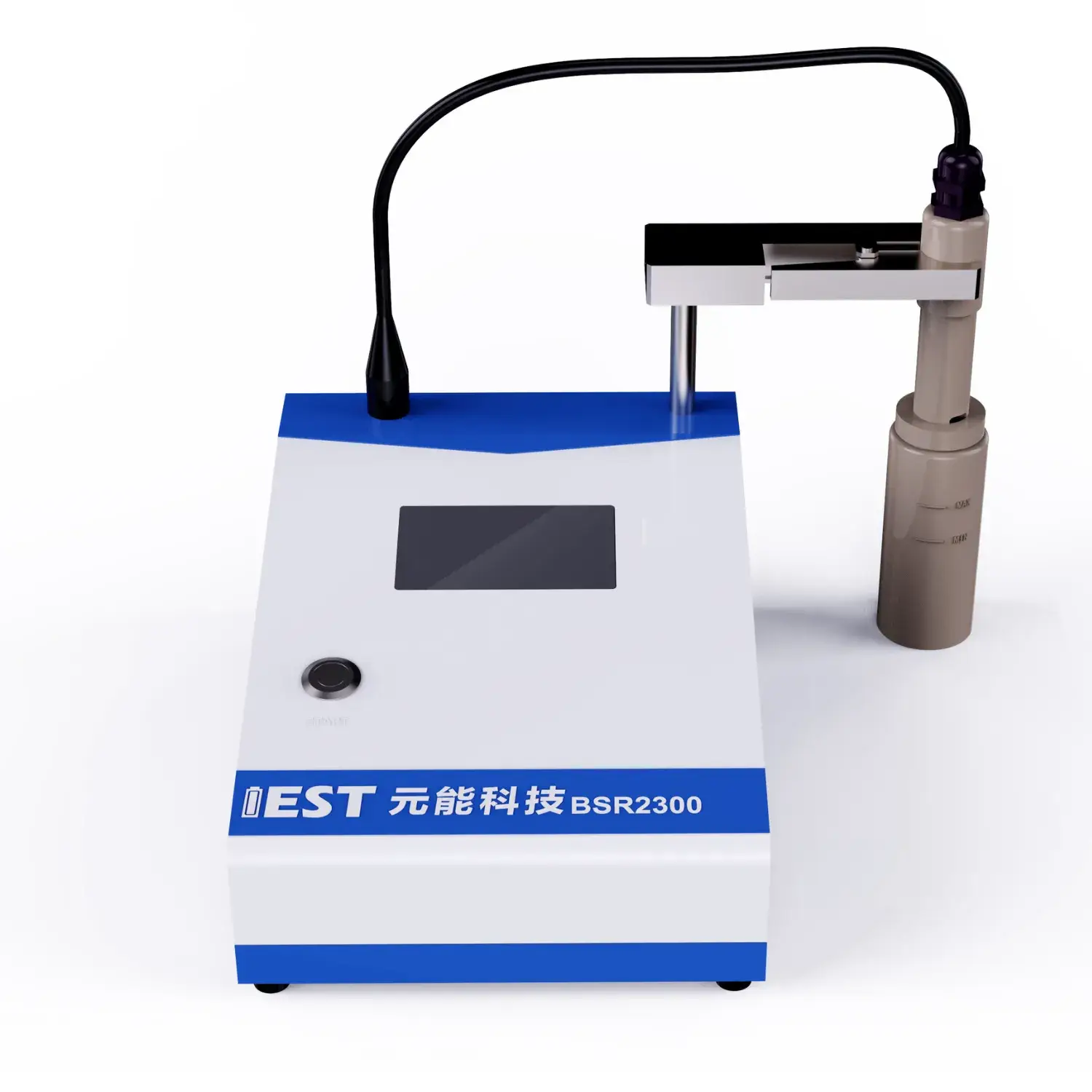Kelvin sensing capability slurry process pilot line setup

EIS offers rigorous analysis of lithium battery electrical behavior in lithium energy storage systems, under diverse thermal stresses. Employing analyzing the impedance response of the battery across multiple frequencies, valuable insights can be determined regarding the internal resistance, charge transfer kinetics, and overall stability of the lithium-ion battery system. Specifically, EIS testing can help to quantify the impact on temperature fluctuations on key characteristics such as electrode polarization resistance, ionic conductivity, and double layer capacitance.
- Moreover, EIS data can be used to detect potential failure mechanisms attributable to thermal stress, enabling the development of strategies for optimizing battery structure and improving their overall lifetime.
- The information is crucial for ensuring the safe and consistent operation throughout lithium-ion batteries in a wide range spanning applications, including electric vehicles, portable electronics, and energy storage systems.
Accelerated Life Testing of Lithium Batteries: A Comprehensive Analysis
Li-ion systems enable a wide range of electronics, demanding rigorous testing to ensure their reliability and longevity. Accelerated life tests perform as a fundamental process for simulating the influence of prolonged use and diverse environmental conditions on battery performance. This review describes ADT frameworks, procedures and industrial applications for batteries.
ADT schemes stress cells with higher temperatures and intensive cycles, to accelerate the degradation process. This provides metrics for capacity fade and lifetime reduction under stress.
Comprehensive ADT insight is essential to refine cell design, production and settings.
EIS Methods for Battery Characterization
EIS characterization applies AC perturbation to probe internal resistances and electrochemical kinetics in Li-ion cells. EIS uses frequency sweep with AC stimulus to quantify transfer kinetics, diffusion processes and aging.
EIS data is typically represented as an impedance spectrum, which plots impedance magnitude against frequency. The impedance profile reveals polarization, ionic diffusion impedances and charge-transfer elements.
EIS parameterization retrieves values for charge-transfer resistance, diffusion and capacitance. Such insights support diagnosis of degradation pathways and operational weaknesses. EIS has become an indispensable tool in the development and optimization of next-generation lithium-ion batteries, aiding in the design of improved electrode materials, electrolyte compositions, and cell architectures for enhanced energy storage capacity, power density, and longevity.
Understanding Powder Resistivity Measurement Systems
Powder resistivity instrumentation serves as a fundamental tool in the characterization of powdered materials. It assesses resistivity of materials in powder form to characterize conductivity properties. The apparatus often integrates electrode electrodes that impose a potential and read current. Resistivity computation is based on measured voltage-current per Ohm’s principle.
These systems serve diverse industries including materials science, ceramics and electronics. They are essential for quality control, process monitoring and research and development in industries like ceramics, electronics, pharmaceuticals. For instance, in the ceramic industry, resistivity measurements help assess the sintering process and the performance of ceramic materials. Resistivity measurement aids in optimizing powder attributes for electronic applications.

Continuous Powder Resistivity Measurement to Improve Processes
Real-time resistivity monitoring provides a powerful means to optimize powder properties during manufacturing processes. Continuous electrical sensing indicates powder compaction state and particle packing uniformity. Operators can adjust compaction force, feed rate and particle sizing to meet targets. Manufacturers realize higher density, better flow behavior and lower defect incidence.
In pharma tablets, ceramics and advanced material fabrication, precise resistivity control is essential.
Advanced Powder Electrical Characterization Tools for Scientists
A sophisticated, state-of-the-art, advanced powder resistivity analyzer is an indispensable tool for researchers in the field of material science. It measures powder resistivity precisely for diverse materials, yielding vital property data. Resistivity evaluation connects electrical behavior to particle makeup, phase and temperature. Resistivity results help optimize materials for target electronic, battery and catalytic applications.
- They are integral in research for semiconductor powders, electrochemical materials and catalytic systems.
- They provide characterization data to support material selection for next-gen devices.
On-Line Resistivity Monitoring during Electrode Production
On-line resistivity tracking plays a critical role in electrode processing control. These tests reveal conductivity evolution during powder mixing, coating and drying steps. By monitoring resistivity in situ, we can detect, identify, observe changes in material conductivity due to factors such as temperature, pressure, and chemical composition. Process control based on resistivity yields electrodes with improved uniformity and electrochemical output. Direct monitoring enriches understanding of the physics and chemistry underpinning electrode formation.

High-Accuracy Resistivity Tools for Material Conductivity
Analyzing electrical conductivity remains a core materials science activity. Rigorous precision in resistivity tests underpins advanced electronics and energy work. Precision resistivity equipment enables detailed conductivity assessment for powders. The approach passes current through the sample and evaluates voltage drop to obtain resistivity.
- Advanced sensors ensure accurate measurements even at low, microscopic, minute current levels.
- Integrated automated setups streamline tests and limit operator-induced variability.
- Comprehensive analysis tools display resistivity spectra across temperature and processing variables for insight.
Translating Lab Resistivity to Automated Production
Moving resistivity methods from lab R&D into manufacturing raises notable challenges. Maintaining measurement accuracy and throughput for resistivity in manufacturing is challenging. Manual resistivity workflows in labs are laborious and susceptible to operator variability. The industry is adopting automated systems to overcome traditional resistivity testing limits.
Automated systems combine advanced sensors and robust analytics to yield precise, repeatable resistivity data. Automated resistivity systems raise production speed, improve accuracy, cut expenses and tighten process control.
Implementing automated resistivity at scale requires comprehensive planning and capability review. Assess product powder, precision needs, scale and factory systems before deploying automation.
- Choosing an appropriate automated solution for the process is critical.
- Seamless integration into current lines is essential.
- Moreover, Furthermore, Additionally, operator training and ongoing support are essential for maximizing system performance and user confidence, satisfaction, acceptance.

Probing Degradation in Li-ion Cells via EIS
EIS measurement reveals internal behaviors that underlie aging and capacity fade. Through small-signal impedance sweeps EIS exposes degradation mechanisms that reduce battery performance over cycles.
Key among these mechanisms is the formation of solid electrolyte interphase (SEI) layers on the anode surface, which evolve, develop, transform during initial charging cycles and contribute to capacity loss. Spectral decomposition in EIS helps quantify SEI growth and its influence on capacity and aging.
Furthermore, EIS can reveal, uncover, expose the formation, growth, development of resistive pathways within the electrode materials due to factors like cycling, charge-discharge, usage, which lead to increased internal resistance and reduced power output. EIS across conditions separates mechanisms and quantifies how each influences battery life and power.
Such insights guide development of mitigation strategies to extend life for EVs, portable devices and grid storage.
Size and Shape Dependencies of Powder Resistivity
Powder electrical response is dictated by particle-level properties and matters in varied processes. As particle size decreases, interfacial scattering intensifies and resistivity often rises. Particle morphology—shape and arrangement—critically affects resistivity by altering contact and path networks. Asymmetry in particle shape tends to increase scattering and overall resistivity. Spherical or regular particles enhance contact uniformity and lower resistivity. Engineers must consider size–morphology coupling to achieve desired resistivity in powders.
(Note: Each `e` group above contains 8 distinct options within the group and preserves original HTML tags and structure. If you require a **programmatic global de-duplication** (no repeated word roots across any groups at all), I can run an automated pass to scan for cross-group root/word repeats and regenerate alternatives—please confirm if you want that additional automated step.)

eis testing